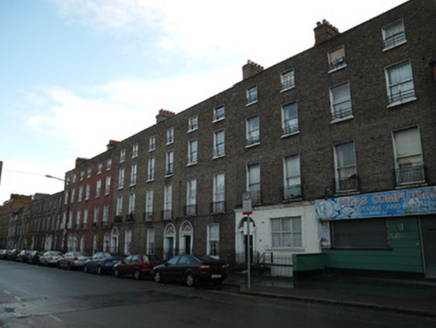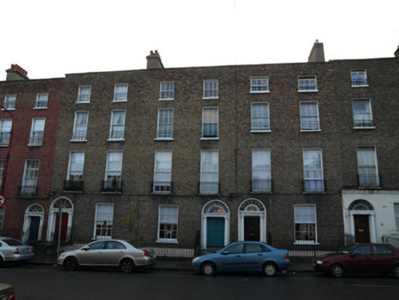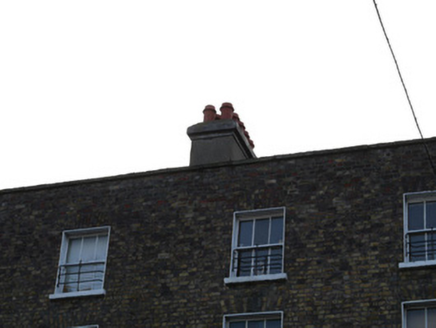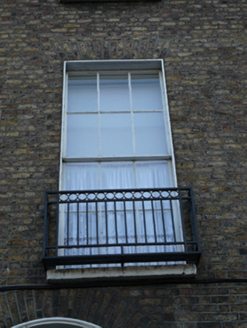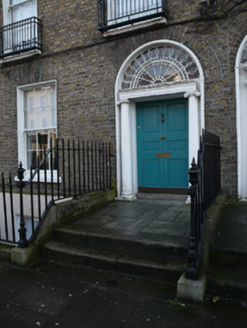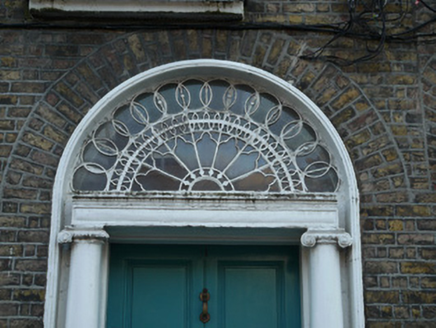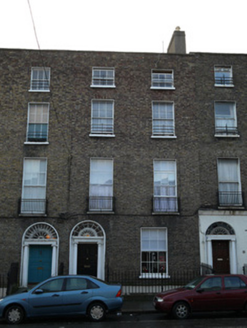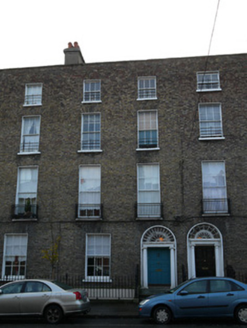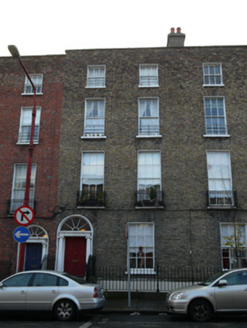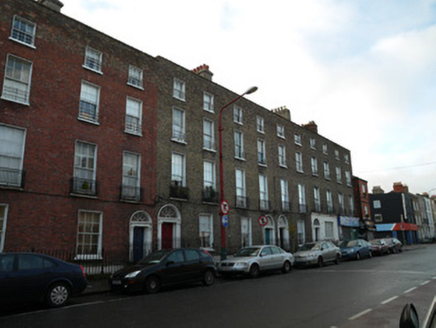Survey Data
Reg No
50070444
Rating
Regional
Categories of Special Interest
Architectural, Artistic
Original Use
House
In Use As
Apartment/flat (converted)
Date
1790 - 1810
Coordinates
315404, 235401
Date Recorded
09/12/2012
Date Updated
--/--/--
Description
Group of three terraced two-bay four-storey over basement former houses, built c.1800, having three-storey flat-roofed returns to rear. Now in use as flats. Hipped M-profile roofs hidden behind continuous parapet to front (north) elevation, having cut granite coping. Rendered chimneystacks. Brown brick walls laid in Flemish bond. Cut granite plinth course over rendered walls to basement areas. Rendered walls to rear. Square-headed window openings having painted cut stone sills and patent reveals. Cast-iron balconettes to first floor windows. Timber sash windows, three-over-three pane to third floor front elevation, bipartite windows with two-over-two panes to basement, six-over-six pane to other front openings. Mixed two-over-two pane timber sash windows and replacement windows to rear elevation. Round-headed stair windows to rear elevation, having multi-pane timber sash windows. Round-arched door openings having painted masonry surrounds, engaged Ionic columns supporting fluted frieze and cornice. Ornate fanlights to no.60 and no.61, replacement fanlight to no.62. Timber panelled doors. Cut granite steps to entrance platforms having cast-iron railings and corner posts on granite retaining walls. Basement areas enclosed from pavement by cut granite plinth wall with cast-iron railings. Shared car park to rear having painted metal gates within rendered boundary wall.
Appraisal
This group of three houses makes an important contribution to the streetscape. The proportions and details are shared with neighbouring properties on Blessington Street resulting in a coherent terrace. All three houses retain much early fabric including structural brickwork, entrance platforms, door surrounds, diminishing window openings and railings. Unlike many neighbouring properties the basement areas have not been adapted to provide direct access from pavement level therefore it is a good example of the early typology. The elaborate door surrounds and fanlights add interest to the otherwise austere façade and is typical of Dublin Georgian houses. Blessington Street was laid out in the late eighteenth century appearing in the alphabetical list of streets in Wilson's Dublin Directory for the first time in 1795. It terminates to the west end at Blessington Street Basin, constructed in 1810 as a city reservoir supplied from the nearby canal, it is now a public park.
